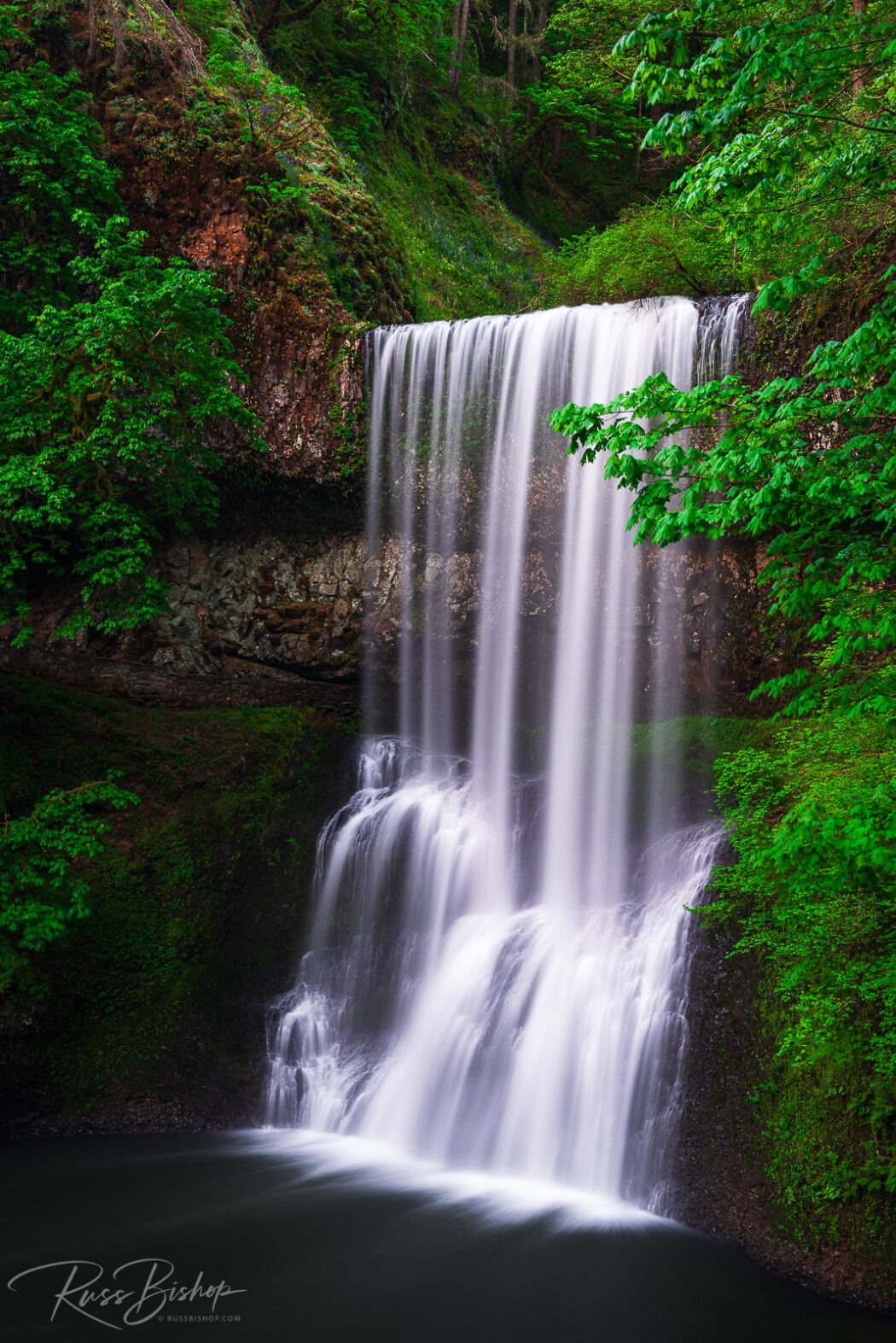
Oregon is well-known for its lovely waterfalls and lush green surroundings so typical of the Pacific Northwest. The Columbia River Gorge includes some of the finest and most recognizable cascades in the world making this an idyllic spot for hiking and photography.
But its proximity to the city of Portland and the interstate highway make this a popular destination that’s certainly no secret. On my last visit a new bride was having her wedding pictures taken under Multnomah Falls complete with stylist and catering!
So if getting off the beaten path is more to your liking, then check out some of the other parts of the state that offer great opportunities to experience the beauty and solitude of falling waters in a pristine setting without the crowds.
Silver Falls State Park east of Salem is one such gem that includes several beautiful falls in a remote valley. It is the largest state park in Oregon with over 9,000 acres, and its 24 miles of trails allow plenty of opportunity for quiet contemplation, exploring, and photography. Lower South Falls shown here is a highlight of the park and one of four cascades where the trail is carved into the cliff behind providing a unique view.
Other destinations such as Proxy Falls in Willamette National Forest and the Rogue River Scenic Byway in southern Oregon are well-worth the diversion off the major highways. As with many locations in the west, a sense of adventure and a willingness to leave the pavement will allow you to experience much more of the wilder side of Oregon.
©Russ Bishop/All Rights Reserved


